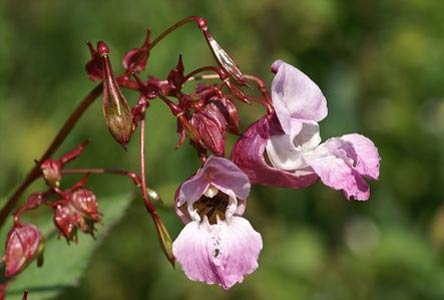Himalayan Balsam - the problem
Himalayan Balsam can grow tall and dense and very quickly, and if allowed to dominate will out compete any other plant around it. It has no natural predators in this country, so once established can be a real problem.
The reason it spreads so well is that its seed pods are extremely efficient at distributing the large robust seeds inside. When ripe, the pods will pop explosively, scattering the seed as far as 10 feet from the parent plant. The seed pods are very sensitive, and if you try to pull the plant up when in seed, it will simply scatter more seed, which germinates in just about any soil. Seeds can also be water-borne, and this has allowed the plant to colonise virtually every river corridor in the country, where it particularly thrives on areas where silt has been deposited.
The solution
Balsam is easily controlled but the most effective methods are labour intensive. Plants can be hand pulled for smaller areas or mechanical cutting is preferable where stands are mature and / or extensive. The main problem is the growth after initial works are completed, from seeds deposited in previous years. Repeated annual visits are often required to ensure the accumulated seed bank is exhausted. Though growth from this seed bank diminishes dramatically year on year, it may take 4-6 years to eradicate the plant entirely.
Approved contractors for... 


page last updated: 02/01/2016






.jpg)